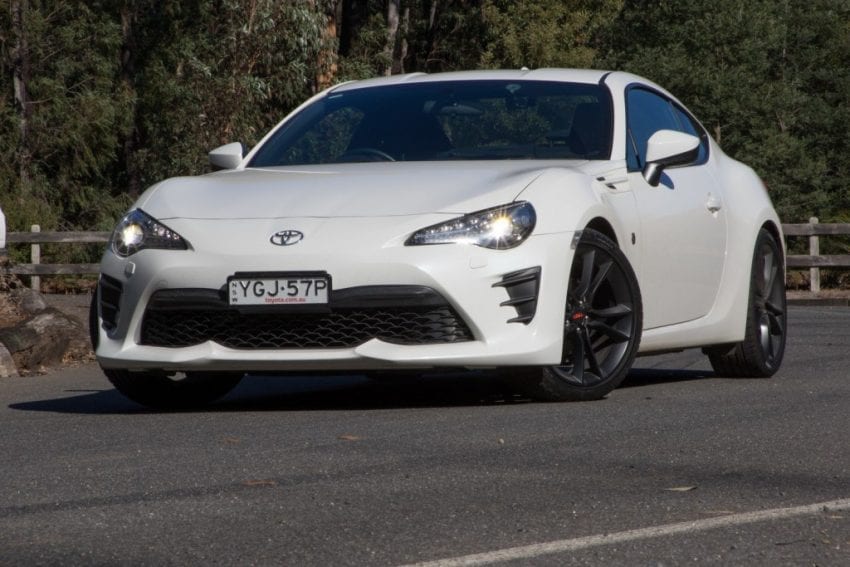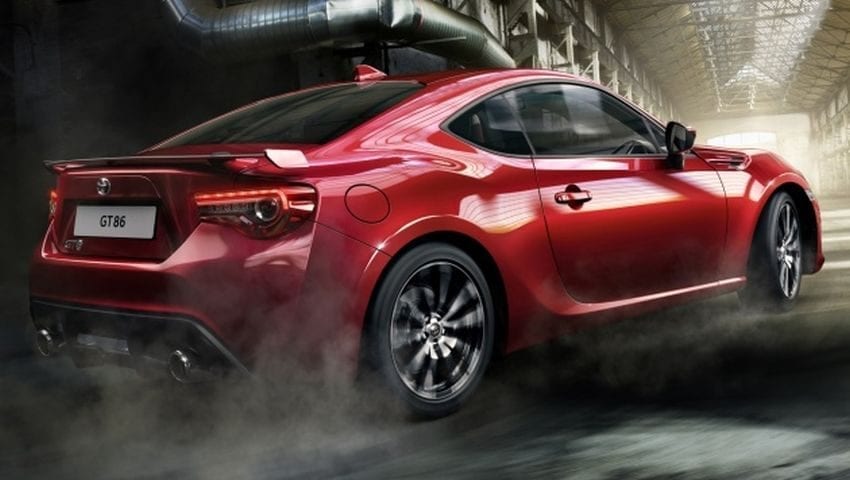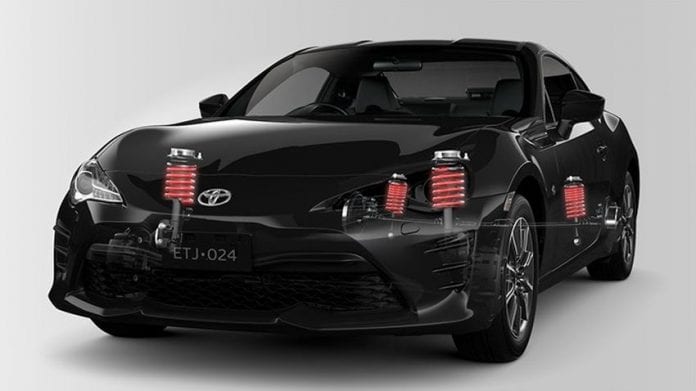The 2018 Toyota 86 has been a model close to perfection since it rolled out of the factory. However, tastes differ, and everyone would like to change some of the things on this model to make it even better. Those changes would be different, and every one of us would uniquely personalize the vehicle, and this is what the Japanese carmaker is offering to the customers. Recently, the modified Toyota 86 GT has been put to the test, and it has a lot to offer to the buyers.
What separates the modified Toyota 86 from the rest?
First of all, it comes with thicker front and rear anti-roll bars which cost $731.37 plus fitting. The diameter of the front is 21mm while the rear is 16mm, for a total increase of 2mm over the stock model. Secondly, the springs are lowered, and even though dampers remained the same, the ride height has been reduced by 20mm. This pleasure costs $409 for four corners.
Last but not least are the 18-inch wheels wrapped in 225/40/18 tires that offset for both +35 compared to the standard 16-inch wheel offset of +48mm. The price of these wheels is $462 for each and tires are not included, but if you want to acquire one, the Continental Contisport 2 are the best, according to Toyota.

When everything is set and done, and you are using dealer prices and dealer labor and not Toyota’s RRP, then expect the price to be just shy of $5,000. However, you can do better, especially if you are looking to buy this in one go or if you are buying a new car. Even though there are equivalent parts available aftermarket, we give an advantage to Toyota kit since it comes with a factory warranty and that is not an insignificant aspect. According to Practical Motoring who spoke with Import Monster, a specialist in aftermarket parts and installment, the new anti-roll bar alongside the springs would cost around $1,000 plus the fitting and alignment that should be at around $500.
What do these changes bring?
Why is this so important? Let’s illustrate – when you enter the curves, the weight is being transferred from inside to outside, and if you take a left turn, that means that the tight tires carry more weight than the left ones. You don’t want this to happen because the traction gain from more weight on the outside tires isn’t equal to the traction loss from the inside tires. In other words, the likelihood of seeing you roll over or spun out is greater.
The anti-roll bar, which is basically a thick metal pipe that connects the two wheels on an axle, kicks in and solves this problem. So, now, when you attack the corner, the anti-roll bar prevents the outside spring/damper from extending and the inside compressing thus limiting body roll. It has another role, and that is when you are driving in a straight line, there is a possibility that one wheel is free to move up and down depending on the road bumps. When you are on straights, the anti-roll bar permits suspension to be flexible. So, what does this have to do with our Toyota 86? This anti-roll bar is thicker which means that the carmaker sacrificed some ride comfort for a flatter ride experience in the corners.

Another modification we have to mention is the lower ride height by 20mm. This automatically lowers the center of gravity which improves performance in bends, braking, and weight distribution. Furthermore, the weight shift under acceleration is enhanced, but considering that the 2018 Toyota 86 is not overpowered, these advantages are more visible on paper than on the road.
Last but not least are wider and lower-profile wheels as we are now getting more wheel and less tire while the overall diameter remains on the same level as with the old ones. The new tires are 225 mm wide compared to the old ones of the GT which are 205 and the GTS which are 215. Moreover, the wheel diameter is 18 inches unlike 16 of the GT and 17 of the GTS.
In addition, the contact patch has a different shape, and the wider tire comes with a wider and shorter contact patch which is relative to the narrow tire. The positive side of this change is better cornering grip and responsiveness, whereas the negative side is a drag in a straight line.
Toyota opted for wider wheels at the rear than at the front, which is interesting, but they decided to use same tires for both axles. You may be confused, and so were we for a moment. There is no point why would they do this because wider tires at the rear can cause multiple issues such as distortion of car balance, plus, the handling problems may just pop up. The 2018 Toyota 86 that was put to the test came with Contisport 2 tires which were recommended by the carmaker, and they are much better than the standard Yokohama Decibels that are offered on the GT model.
Driving Experience
The 2018 Toyota 86 which comes with all these changes mentioned above behaves very well on the road. The body may be stiffer, but the new vehicle rides much better than the older base models. Thanks to the Continental tires, the grip is far better, while all the suspension changes are welcomed. Even though old tires provided insufficient grip to the surface, they were partially the reason why it was fun to drive that car. The Toyota 86 still has that fun-to-drive character trait, but it is not as prominent as before. Bear in mind that the vehicle is lower now and you cannot just run across the speed bumps.
Is it worth giving almost $5,000 for these modifications?
This depends on what it is that you are looking for in the 86. If you have no interest in racing on the track, then you should definitely skip this offer. You will get the same beautiful car with the same engine under the hood, and perhaps you can invest this money in something else. However, if you like the visual appeal with wider tires, and if you want to go wild from time to time, this is a thing to add. It fits easily, and it really enhances the driving mechanics, plus you are going to feel safer when you attack the corners.
The great thing is that you can fit any part of the kit at any time, so you might as well just improve your 2018 Toyota 86 gradually. We suggest you keep the original parts because the day will come when you have to resell the vehicle, and these parts might be useful to have.
The refreshed 2018 Toyota 86 Design Changes
The new model comes with a digital speedometer, LED headlights, reversing camera, gearshift indicator, and hill hold. Furthermore, there is slightly better infotainment system, one additional USB port, and some smaller body revisions. Unfortunately, there is no satellite navigation and keyless entry.
Conclusion
The new Toyota doesn’t come with major changes in terms of design, engine, and interior, but it is definitely an upgrade compared to the previous version. Should you buy it? We’ll leave you to decide. Take everything into consideration and see whether it is worth it. One thing is for sure – Toyota tackled some of the major issues and improved the actual driving of the car. It feels so good to sit behind the wheel of the new Toyota 86.









